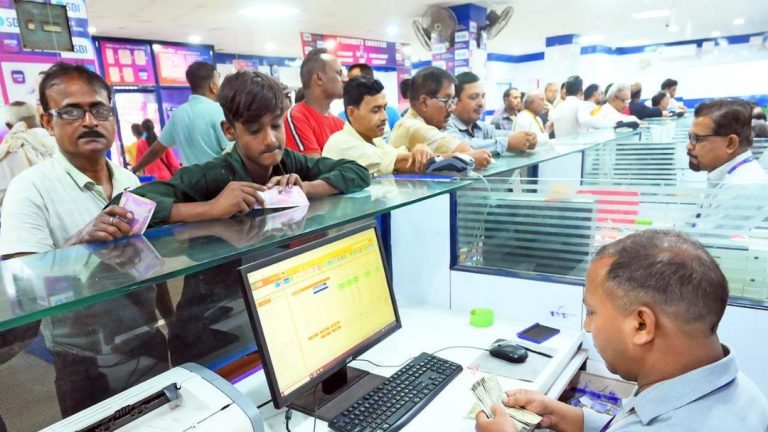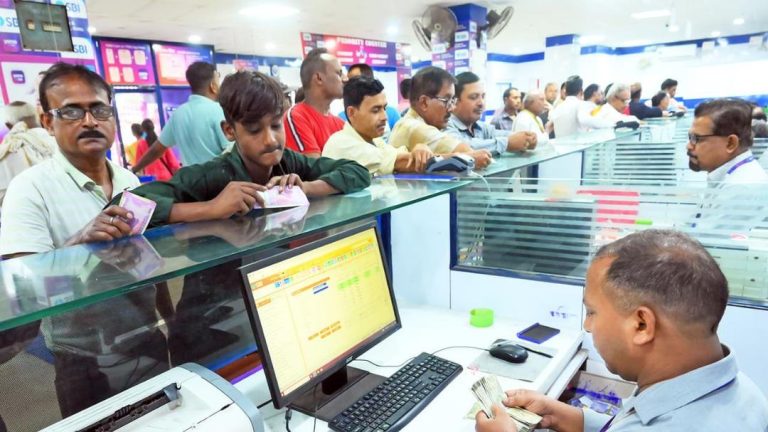
Why has the Nifty index remained flat for an entire year?
The Indian stock market has been stuck in a rut for quite some time now, with the Nifty 50 index remaining nearly unchanged over the past year. Despite strong earnings from major firms, the index has failed to make any significant headway, leaving investors wondering what’s holding back Indian equities. In this blog post, we’ll delve into the possible reasons behind this flat performance and explore the implications for investors.
Weak Global Cues
One of the primary reasons for the Nifty’s lackluster performance is the weak global cues. The ongoing trade tensions between the US and China have created uncertainty in the global markets, leading to a decline in investor sentiment. The US has been imposing tariffs on various Chinese goods, which has resulted in a retaliatory response from China. This trade war has had a ripple effect on the global economy, leading to a decline in trade volumes and a slowdown in economic growth.
Tariff Threats from the US
The US has also been threatening to impose tariffs on Indian goods, which has added to the uncertainty in the Indian market. The US has been critical of India’s trade policies, particularly with regards to its agricultural sector, and has threatened to impose tariffs on Indian goods such as steel and aluminum. This has led to a decline in investor sentiment, as investors are wary of the potential impact of tariffs on Indian exports.
Subdued Investor Sentiment
The subdued investor sentiment is another major reason for the Nifty’s flat performance. Investors are cautious about investing in the Indian market due to the uncertainty surrounding the global economy and the trade tensions between the US and China. Additionally, the Indian government’s recent moves to tighten banking regulations and increase scrutiny of cash transactions have also led to a decline in investor sentiment.
Rupee’s Slip to a Five-Month Low
The rupee’s recent slip to a five-month low has also added to the uncertainty in the Indian market. The rupee’s decline has led to a surge in imports, which has put pressure on the country’s foreign exchange reserves. This has led to a decline in investor sentiment, as investors are worried about the potential impact of a depreciating rupee on the country’s economy.
What’s Holding Back Indian Equities?
So, what’s holding back Indian equities? There are several factors that are contributing to the Nifty’s flat performance. Firstly, the weak global cues are having a negative impact on the Indian market. The ongoing trade tensions between the US and China are creating uncertainty in the global markets, which is leading to a decline in investor sentiment.
Secondly, the tariff threats from the US are also having a negative impact on the Indian market. The US has been critical of India’s trade policies, particularly with regards to its agricultural sector, and has threatened to impose tariffs on Indian goods such as steel and aluminum. This has led to a decline in investor sentiment, as investors are wary of the potential impact of tariffs on Indian exports.
Thirdly, the subdued investor sentiment is also a major factor. Investors are cautious about investing in the Indian market due to the uncertainty surrounding the global economy and the trade tensions between the US and China. Additionally, the Indian government’s recent moves to tighten banking regulations and increase scrutiny of cash transactions have also led to a decline in investor sentiment.
What Can Investors Do?
So, what can investors do in this uncertain environment? Firstly, they can diversify their portfolios by investing in a mix of stocks, bonds, and other asset classes. This will help to reduce their exposure to any one particular asset class and increase their chances of generating returns.
Secondly, investors can also consider investing in international markets, such as the US or Europe. These markets are less affected by the trade tensions between the US and China, and offer investors a range of investment opportunities.
Thirdly, investors can also consider investing in sectors that are less affected by the trade tensions, such as healthcare or technology. These sectors are less dependent on exports and are more likely to continue growing despite the trade tensions.
Conclusion
In conclusion, the Nifty’s flat performance over the past year is due to a combination of factors, including weak global cues, tariff threats from the US, subdued investor sentiment, and the rupee’s decline to a five-month low. Investors are cautious about investing in the Indian market due to the uncertainty surrounding the global economy and the trade tensions between the US and China. However, there are still opportunities for investors to generate returns in this uncertain environment by diversifying their portfolios, investing in international markets, and investing in sectors that are less affected by the trade tensions.
News Source:






